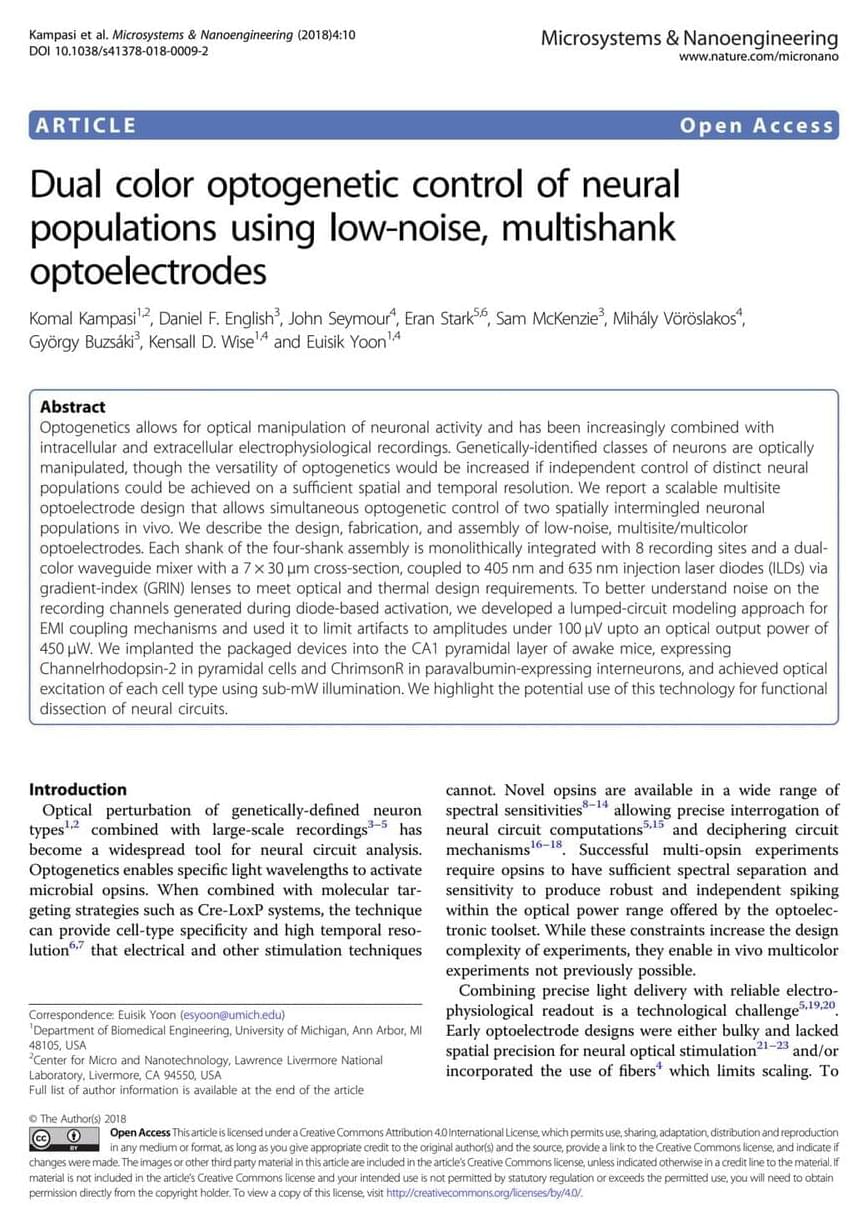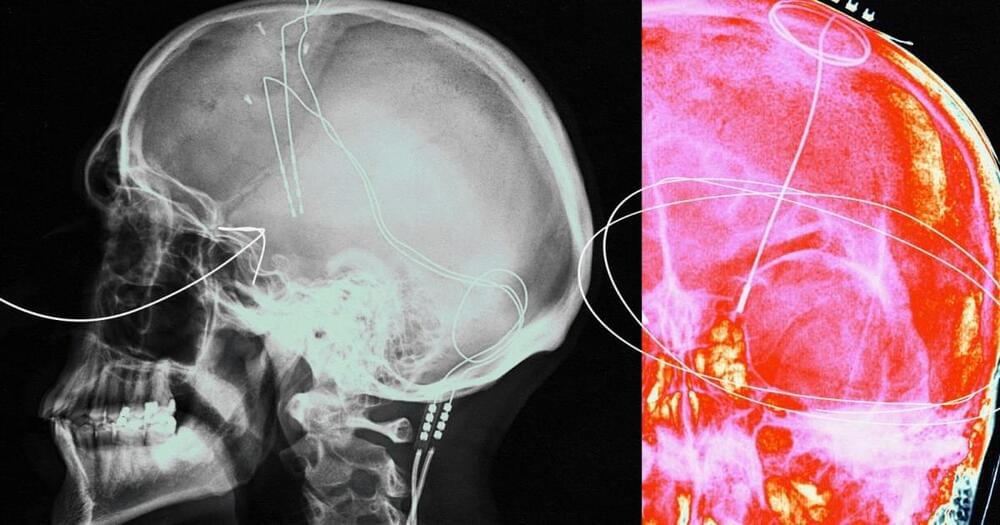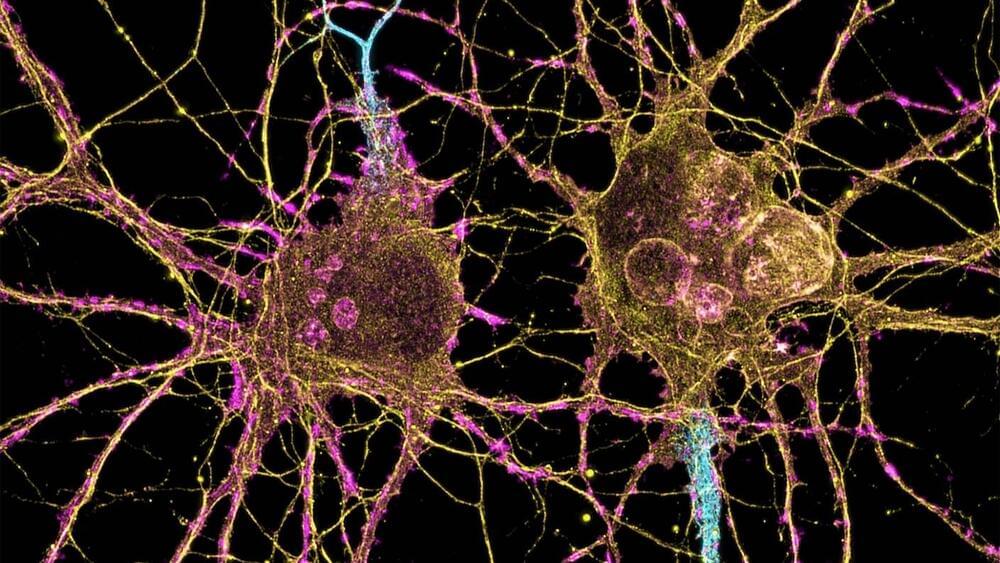Facing an alcohol crisis, the US sees 12% of adult deaths linked to abuse. Excessive drinking risks permanent brain damage, Wernicke-Korsakoff Syndrome. Symptoms mimic drunkenness and can lead to irreversible psychosis. Prevention? Cut back or quit. Concerned? Seek medical advice for potential Vitamin B1 treatment.
Category: neuroscience – Page 484

Matt Perich: Merging neural and behavioral modularity through brain-wide compositional modes
Spontaneous behavior in different individuals can be decomposed and understood using a relatively small number of neurobehavioral modules—the compositional modes—and elucidate a compositional neural basis of behavior.\
This video is part of the SNAC seminar series organized by Mac Shine, Joe Lizier, Ben Fulcher, and Eli Muller (The University of Sydney).

Researchers develop first high-precision dual-color optoelectronic brain probe
A team of researchers at the University of Massachusetts Amherst has developed the first dual-color optoelectronic neural probe.
Unlike previous, single probes, which often control brain activity in only one direction—excitation or inhibition, but not both—this new design can enhance and silence the electrical activities of the same neurons within specific cortical layers of the brain. It promises aid the investigation of tightly packed neural microcircuits within the cortex and deep brain regions and, in the longer term, add to the functional mapping of the brain.
Guangyu Xu, assistant associate professor of electrical and computer engineering, an appointee of the Dev and Linda Gupta Professorship at UMass Amherst, and principal investigator of the study hopes the device can ultimately help researchers identify the origin of brain diseases.



After Weight Loss, Ozempic Is Set to Conquer a Universe of Brain Disorders
For many people struggling with obesity, the drug is a potential lifesaver. Excess weight is associated with higher incidences of stroke, heart and liver disease, sleep apnea, joint problems, and some cancers. A major clinical trial this year in tens of thousands of overweight people without diabetes found the main ingredient in Ozempic, semaglutide, reduced the risk of stroke and heart attack, while lowering the chances of death due to cardiovascular problems.
Perhaps even more importantly, the drug is gradually changing societal views on obesity—it’s not due to lack of will power, but a chronic medical condition that can be treated.
But Ozempic and similar drugs—like Wegovy, another semaglutide-based medication that has been FDA-approved for weight loss—are already set for the next chapter: tackling a wide range of brain disorders, including Alzheimer’s and Parkinson’s. Clinical trials are underway for addiction, and the drugs are showing early promise battling bipolar disorder and depression.
Digital immortality: would you upload your mind to a computer?
But what would it actually mean to transfer your mind from “meat space” to cyberspace, and how could it be done? The basic idea rests on several assumptions, says Angela Thornton, a researcher at the Horizon Centre for Doctoral Training at University of Nottingham, who is also partnered with the Carboncopies Foundation, a non-profit that focuses on “whole brain emulation” and the creation of substrate-independent minds. “It assumes that we could replicate our brain [with] a certain level of understanding of how it works,” she says. “Not necessarily knowing all the detail, but enough to be able to emulate it.” Then, she adds, we have to make the assumption that the “mind” (i.e. the abstract part of us that thinks, remembers, imagines and senses) naturally emerges from the structures of the physical brain.
This is a lot to take on, which is partly why current brain emulation research is still stuck at the level of worms and, in more advanced studies, mice. Whether you agree with them or not, though, the arguments to take experiments further – toward larger mammals and, finally, humans – are quite obvious. For one, we could theoretically ‘live’ forever as a disembodied consciousness (or at least until the machines that hosted our virtual minds were destroyed), and continue interacting with our loved ones after they’ve passed as well. It’s possible that this could also go some way to solving the alleged population crisis, while limiting the impact of our physical bodies on the planet’s finite resources.
Of course, there are plenty of important questions that need answers before any of this can actually happen. Below, Thornton helps us unpick some of the main constraints and controversies.

Ultrasound-Triggered In Situ Photon Emission for Noninvasive Optogenetics
Optogenetics has revolutionized neuroscience understanding by allowing spatiotemporal control over cell-type specific neurons in neural circuits. However, the sluggish development of noninvasive photon delivery in the brain has limited the clinical application of optogenetics. Focused ultrasound (FUS)-derived mechanoluminescence has emerged as a promising tool for in situ photon emission, but there is not yet a biocompatible liquid-phase mechanoluminescence system for spatiotemporal optogenetics. To achieve noninvasive optogenetics with a high temporal resolution and desirable biocompatibility, we have developed liposome (Lipo@IR780/L012) nanoparticles for FUS-triggered mechanoluminescence in brain photon delivery. Synchronized and stable blue light emission was generated in solution under FUS irradiation due to the cascade reactions in liposomes.

Research explores cell-based theory of consciousness and what it entails
Humans and other animals with brains perhaps aren’t the only beings on the planet to experience consciousness, says a study in the journal EMBO Reports.
Consciousness instead underpins all life forms, from the smallest cells to the most complex organisms. Far from being limited to creatures like ourselves, the cell-based theory of consciousness frames the phenomenon a fundamental part of life itself.
Conventional thinking about consciousness—called the standard model of consciousness—focuses on the brain, supposing only complex organisms like humans and animals have it. But the new cell-based theory argues that consciousness started with the very first cells that emerged about 3.8 billion years ago and plants, bacteria and even amoebas have it.